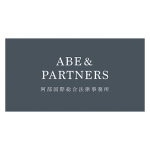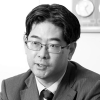In patent litigation, national differences exist regarding the extent to which images, figures, tables, and movies with visual effects are used in presentations in court and in documents submitted to the court. Below are some examples based on my own experience.
US
Presentations with visual effects are frequently used in jury trials in the US. This is probably because juries, who are not professional judges but are representatives of the citizens, need easy-to-understand explanations. For example, the layer structure of the light-emitting layer of an LED can be visually explained to the jury by comparing it to the bread, vegetable, ham, and bread structure of a sandwich.
Such visual representations may be prepared by the lawyers, but are often commissioned using specialists called graphics experts. Appointing a competent graphics expert is as indispensable to winning a trial as appointing a competent trial lawyer or a competent jury consultant.
In the US jury trials I was assigned to, Suann Ingle Associates (https://www.suanningle.com/) was appointed as the graphics expert. Before and during the trial, Ingle worked knee-to-knee with lead counsel every day in the ‘war room’ on the preparation of the graphics. The lead counsel drew a rough sketch and told Ingle what he wanted to represent, and Ingle put it into a PowerPoint presentation. Whenever I looked at the created PowerPoint, I was amazed at how well the ideas of the lead counsel were represented. It was then a daily pleasure during the trial how the lead counsel demonstrated the PowerPoint slides to the jury at the next day's trial, and how the jury reacted to them.
Japan
In patent litigation in Japan, there are no juries, only professional judges. Nevertheless, in the written documents of patent litigation, figures and tables are often used to represent the case in an easy-to-understand way. In the explanatory session, both parties make a PowerPoint presentation to the judges, judicial research officials, and technical advisers.
It was impressive that the former chief judge of the IP High Court said that even when reading the same 50-page document, reading the brief and reading the PowerPoint slides for the explanatory session were completely different in terms of comprehension and that the PowerPoint slides for the explanatory session were much easier to understand. Although judges are skilled at reading and understanding documents quickly, it was still found that a visual representation using PowerPoint slides is better, especially with regard to explaining the technical detail of patent litigation.
In highly serious cases, PowerPoints become more detailed and sometimes video is used. However, the use of graphics experts is not as well developed in Japan as in the US, and compared with the PowerPoints prepared by graphics experts in the US, there seems to be potential for improvement in terms of appeal to the audience.
Germany
German patent litigation does not often include figures and tables in the documents, and PowerPoint is not used in presentations at hearings. However, German IP judges have an extremely high level of technical understanding.
The IP judges of the Regional Court of Düsseldorf, the Higher Regional Court of Düsseldorf, and the Federal Court of Justice in Karlsruhe questioned the lawyers and patent attorneys at a hearing with an accurate understanding of the complex technical detail. The then Presiding Judge Meier-Beck of the Federal Court of Justice and his colleagues, who had an almost exact understanding of the extremely difficult technical details, gave their provisional opinion at the beginning of the hearing and asked questions to the lawyers (Takanori Abe, Takanori ABE reviews the litigation in Germany over Nichia’s patent for a white LED, Managing Intellectual Property September 2017, available at http://www.abe-law.com/en/publications/paper/1043/), displaying technical comprehension that impressed me and our clients.
A German IP expert who is also well experienced in Japanese IP said that in Germany, IP judges are trained over a period of 10 years to be able to review specifications deeply and to be able to proceed appropriately with cases. I witnessed at first hand the highly qualified and trained judges in Germany.
Cultural comparisons between countries
One reason for the use of presentations with visual effects in the US is to appeal to amateur members of the jury, but this does not seem to be the only reason. The case of a Soviet physicist who, when he emigrated to the US, was advised to write 'interesting' physics papers from now on shows that in the US the emphasis is on appealing to the reader, even if the reader is a specialist. If one can write interesting physics papers, it would seem less difficult to write interesting legal papers and documents submitted to the court, and to give interesting presentations in court.
While in Hollywood films – Speed, for example – the story often starts with an explosive action sequence, which makes for a thrilling beginning, in European films the story often unfolds quietly at the beginning. This difference seems to be directly reflected in the writing style of documents submitted to the courts in the US and Europe. In the US, it is important to write in a catchy way to appeal to the reader, and a technique is sometimes used where the brief is opened with the sentence “God is in the details” and read all at once.
The US and Germany are very different. If a German lawyer is asked to include figures and tables in a brief, or catchy expressions at the beginning of a brief, or impressions in a brief, the request is often rejected on the ground that this is the US way of doing things, not the German way. In my experience, Germans think thoroughly deductively and value doctrine and principles.
The US and the UK approaches are also inherently different, despite both countries being part of the Anglosphere. A UK lawyer once told a story about a US client who requested a brief writing style in a meeting, but the UK lawyer refused because the US way of doing things was not acceptable in the UK. The Phantom of the Opera also had a different appearance on Broadway and in London's West End, despite being the same musical, and I believe that is the same thing.
President Zelensky of Ukraine is well aware of the differences between countries and delivered speeches requesting assistance in a way that was appropriate for each country. His main focus was on 9/11 in the US, a famous speech by Churchill in the UK, the Wall in Germany, and the Great East Japan Earthquake in Japan. He used a metaphor in Japan and referred to the Chernobyl plant without mentioning the Fukushima plant, whereas in the US and others he used direct expressions.
The characteristics of the Japanese are as described in Zelensky's speech. However, as trials are occasions of persuasion, Japanese behaviour in court is more direct than Japanese behaviour outside of court. The PowerPoint presentations and a criminal trial example, although not patent litigation, in which criminal defence lawyers tried to acquit the defendant by having the judges read a 100-plus page brief with the catchy introduction "This case is like Ryunosuke Akutagawa's 'The Spider's Thread'" give the impression that it is closer to the approach in the US.












